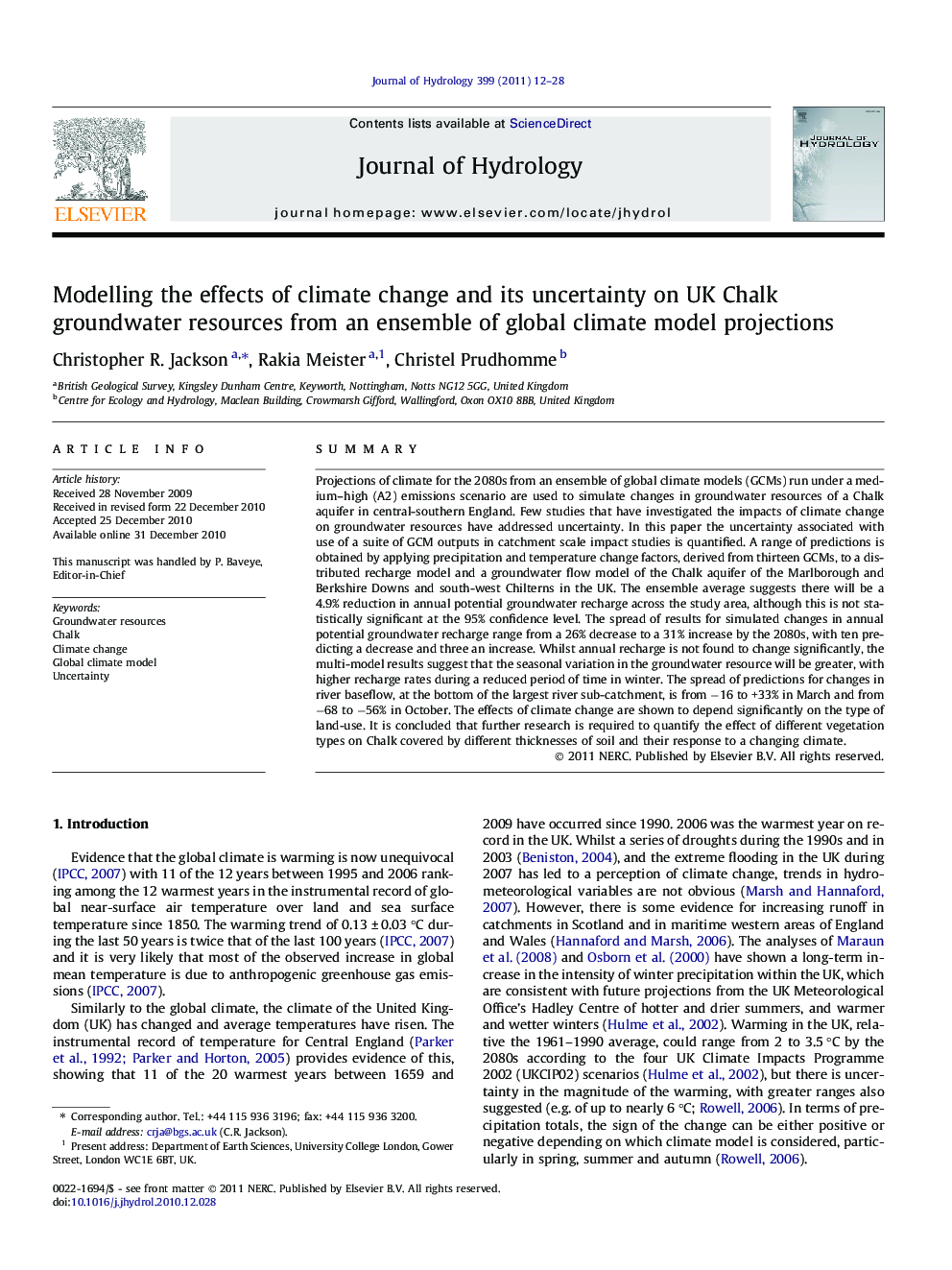| Article ID | Journal | Published Year | Pages | File Type |
|---|---|---|---|---|
| 4577791 | Journal of Hydrology | 2011 | 17 Pages |
SummaryProjections of climate for the 2080s from an ensemble of global climate models (GCMs) run under a medium–high (A2) emissions scenario are used to simulate changes in groundwater resources of a Chalk aquifer in central-southern England. Few studies that have investigated the impacts of climate change on groundwater resources have addressed uncertainty. In this paper the uncertainty associated with use of a suite of GCM outputs in catchment scale impact studies is quantified. A range of predictions is obtained by applying precipitation and temperature change factors, derived from thirteen GCMs, to a distributed recharge model and a groundwater flow model of the Chalk aquifer of the Marlborough and Berkshire Downs and south-west Chilterns in the UK. The ensemble average suggests there will be a 4.9% reduction in annual potential groundwater recharge across the study area, although this is not statistically significant at the 95% confidence level. The spread of results for simulated changes in annual potential groundwater recharge range from a 26% decrease to a 31% increase by the 2080s, with ten predicting a decrease and three an increase. Whilst annual recharge is not found to change significantly, the multi-model results suggest that the seasonal variation in the groundwater resource will be greater, with higher recharge rates during a reduced period of time in winter. The spread of predictions for changes in river baseflow, at the bottom of the largest river sub-catchment, is from −16 to +33% in March and from −68 to −56% in October. The effects of climate change are shown to depend significantly on the type of land-use. It is concluded that further research is required to quantify the effect of different vegetation types on Chalk covered by different thicknesses of soil and their response to a changing climate.
Research highlights► We model changes in groundwater resources by the 2080s of a UK Chalk aquifer. ► We use outputs from 13 global climate models to drive a numerical groundwater model. ► Future climates simulations are based on an A2 greenhouse gas emissions scenario. ► Changes in the mean groundwater state variables are uncertain. ► The results suggest that the seasonal variation in the resource will be enhanced.
